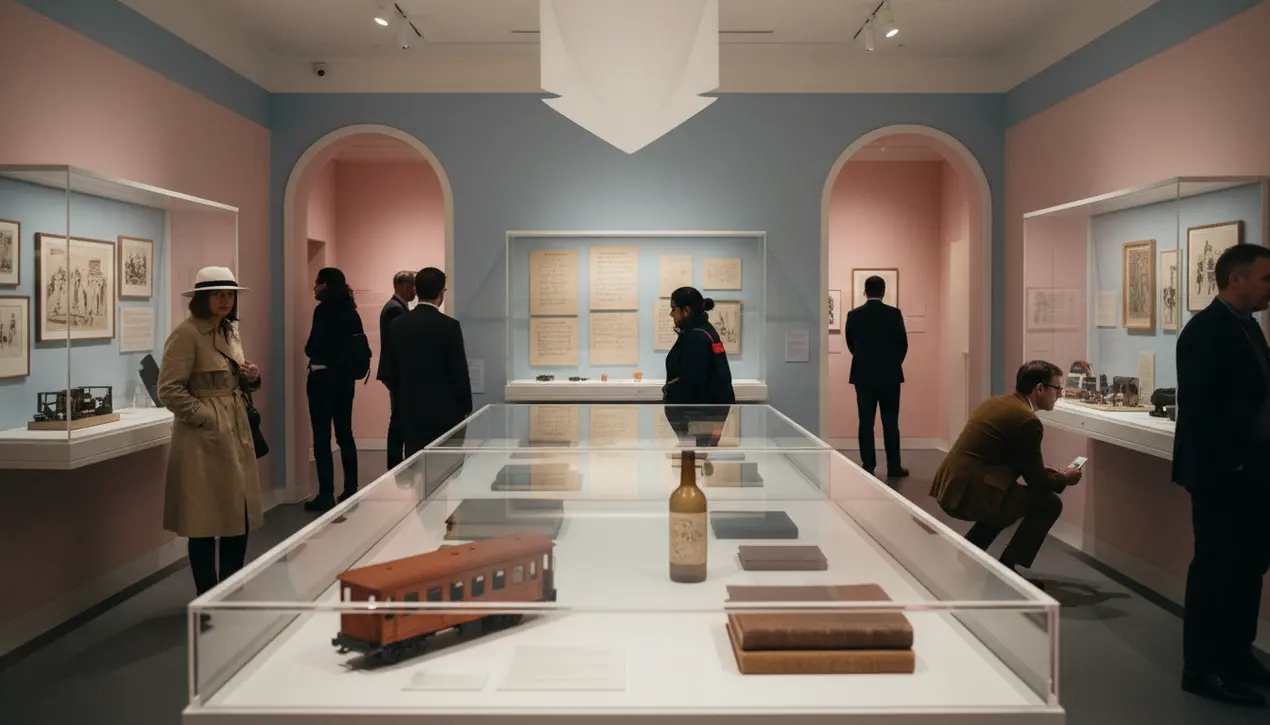
Entertainmentawards & festivals
Wes Anderson retrospective at London's Design Museum features archival objects.
AM
Amanda Lewis
4 hours ago7 min read1 comments
The cinematic universe of Wes Anderson, a director whose meticulously crafted visual grammar has become a vernacular unto itself, is set to receive its most comprehensive UK examination to date with a major retrospective at London's Design Museum. Slated to run from November 21st, 2025, to July 26th, 2026, this landmark exhibition, titled 'Wes Anderson: Archives', marks the first public display of the auteur's personal archives in the United Kingdom, promising an unprecedented dive into the obsessive detail that defines his work.For Anderson aficionados and design enthusiasts alike, this is less a simple museum show and more a pilgrimage into the very mechanics of his whimsical, symmetrical, and profoundly melancholic worlds. The exhibition will feature over 700 archival objects, a treasure trove that is expected to include everything from the meticulously handwritten scripts and detailed storyboards for films like 'The Grand Budapest Hotel' and 'The French Dispatch' to the actual props, miniature sets, and custom-designed costumes that give his frames their distinctive texture.Imagine seeing the exact shade of pink from Mendl's pastry box, the faded labels on the Boy with Apple crates, or the specific typewriter used by Junior Writer Herbsaint Sazerac—these are not mere relics but the fundamental building blocks of Andersonian reality. This curatorial decision to house the retrospective at the Design Museum is a stroke of genius, implicitly arguing that Anderson's primary contribution to contemporary culture is not merely narrative but architectural and sartorial; his films are less moving pictures and more inhabited dioramas where every doorknob, font, and piece of luggage is a character in its own right.The show will likely explore his long-standing collaborations with production designers Adam Stockhausen and Kris Moran, and costume designer Milena Canonero, partnerships as crucial to his oeuvre as his work with actors like Bill Murray and Tilda Swinton. It invites us to consider his filmography as a sustained inquiry into curated living, where characters retreat into highly stylized environments as a defense against the chaos of the outside world—a theme that resonates deeply in our own era of aestheticized digital identities.The timing of this exhibition, positioned for a long run through mid-2026, suggests a blockbuster intent, poised to draw international crowds to London and solidify Anderson's legacy not just as a filmmaker but as a defining visual artist of the early 21st century. It follows the popular success of his Roald Dahl short films for Netflix, which introduced his signature style to a new, broader audience, and capitalizes on a cultural moment where his aesthetic has been widely memed and imitated, a testament to its powerful influence.For critics, the challenge of the exhibition will be to move beyond the surface-level appreciation of his 'Instagrammable' style and delve into the profound sense of loss and nostalgia that underpins the pristine compositions; the archives offer a chance to see the painstaking labor behind the effortless charm, the human hands that craft the perfect artifice. This is not just a display of cool stuff; it is a deep, analytical excavation of how one man's singular, obsessive vision has reframed our understanding of color, composition, and narrative design in modern cinema, making the London Design Museum the essential destination for anyone who has ever wanted to step inside a living painting.
#Wes Anderson
#retrospective
#Design Museum
#London
#archival objects
#film director
#exhibition
#featured
Stay Informed. Act Smarter.
Get weekly highlights, major headlines, and expert insights — then put your knowledge to work in our live prediction markets.
Comments
Loading comments...
© 2025 Outpoll Service LTD. All rights reserved.